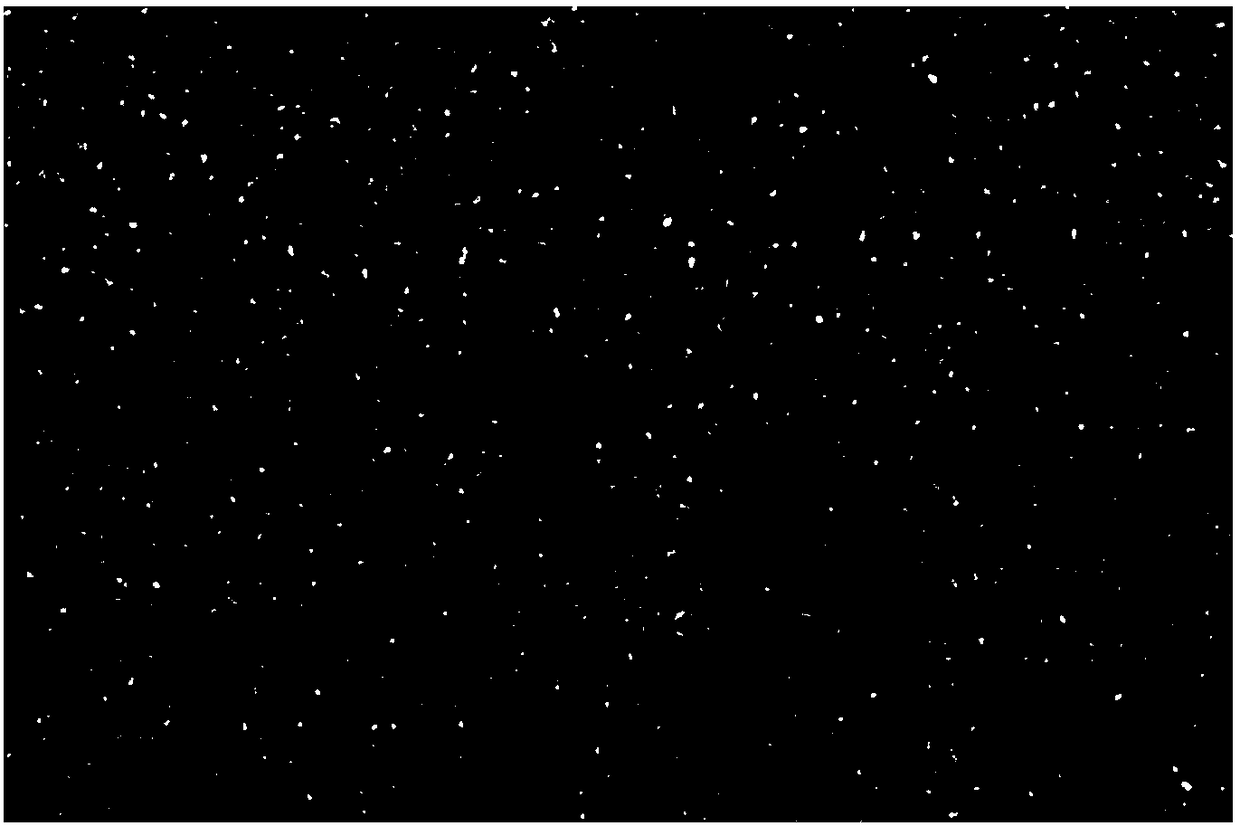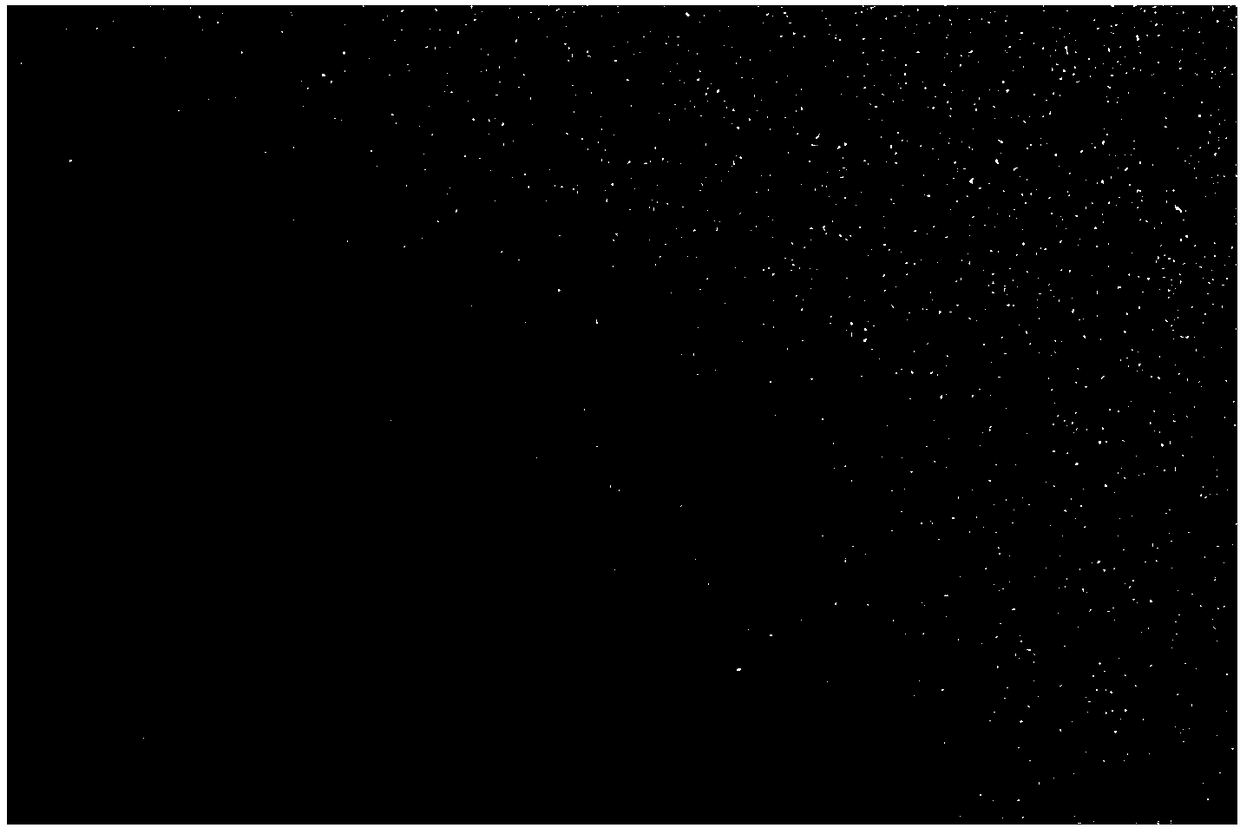Preparation method of copper nano-clusters with adjustable and controllable fluorescent color
A copper nano-cluster and color technology, applied in the field of metal nano-cluster preparation, can solve the problems of few aggregation-induced preparation methods and uneven size of nano-cluster particles, and achieve the effects of low cost, simple preparation method and high stability
- Summary
- Abstract
- Description
- Claims
- Application Information
AI Technical Summary
Problems solved by technology
Method used
Image
Examples
Embodiment 1
[0027] Dissolve 30 mg of tetramethylammonium bromide and 68 mg of copper chloride dihydrate in 8 ml of deionized water, mix and stir at 750 rpm for 30 minutes at a temperature of 20°C. Weighed 3.8 mg of sodium borohydride and dissolved it in 2 ml of deionized water, and slowly added it dropwise to the above mixture, a solid was precipitated, and the reaction was continued for 4 hours with stirring. The above reaction solution was transferred to a 10ml centrifuge tube and centrifuged (12500g, 30 minutes) to obtain a precipitate. The precipitate was washed with water and centrifuged, specifically adding 10 ml of deionized water to resuspend the precipitate, and then centrifuged (12500 g, 30 minutes) to obtain the precipitate. Washing with water and centrifugation was repeated three times, and the precipitate was vacuum-dried to obtain a solid product of copper nanoclusters. analyzed by transmission electron microscopy (see figure 1 , figure 2 ) The solid product obtained is ...
Embodiment 2
[0029] 42 mg of tetraethylammonium bromide and 68 mg of copper chloride dihydrate were dissolved in 8 ml of deionized water, mixed and then stirred at a stirring speed of 750 rpm for 30 minutes at a temperature of 30°C. 17.6 mg of ascorbic acid was weighed and dissolved in 2 ml of deionized water, and slowly added dropwise to the above mixed solution, a solid was precipitated, and the stirring reaction was continued for 1 hour. The above reaction solution was transferred to a 10ml centrifuge tube and centrifuged (12500g, 20 minutes) to obtain a precipitate. The precipitate was washed with water and centrifuged, specifically adding 10 ml of deionized water to resuspend the precipitate, and then centrifuged (12500 g, 20 minutes) to obtain the precipitate. Washing with water and centrifugation was repeated three times, and the precipitate was vacuum-dried to obtain a solid product of copper nanoclusters. The solid product obtained by transmission electron microscopy analysis is ...
Embodiment 3
[0031] Dissolve 86 mg of tetrahexylammonium bromide and 85 mg of copper chloride dihydrate in 8 ml of deionized water, mix and stir at 750 rpm for 30 minutes at a temperature of 25°C. Weighed 7.6 mg of sodium borohydride and dissolved it in 2 ml of deionized water, and slowly added it dropwise to the above mixture, a solid was precipitated, and the reaction was continued for 3 hours with stirring. The above reaction solution was transferred to a 10ml centrifuge tube and centrifuged (12500g, 15 minutes) to obtain a precipitate. The precipitate was washed with water and centrifuged, specifically adding 10 ml of deionized water to resuspend the precipitate, and then centrifuged (12500 g, 15 minutes) to obtain the precipitate. Washing with water and centrifugation was repeated three times, and the precipitate was vacuum-dried to obtain a solid product of copper nanoclusters. The resulting solid copper nanoclusters were further analyzed by transmission electron microscopy.
PUM
 Login to View More
Login to View More Abstract
Description
Claims
Application Information
 Login to View More
Login to View More - R&D
- Intellectual Property
- Life Sciences
- Materials
- Tech Scout
- Unparalleled Data Quality
- Higher Quality Content
- 60% Fewer Hallucinations
Browse by: Latest US Patents, China's latest patents, Technical Efficacy Thesaurus, Application Domain, Technology Topic, Popular Technical Reports.
© 2025 PatSnap. All rights reserved.Legal|Privacy policy|Modern Slavery Act Transparency Statement|Sitemap|About US| Contact US: help@patsnap.com



